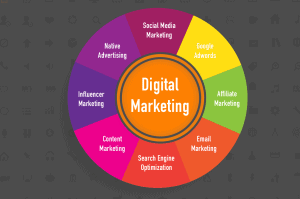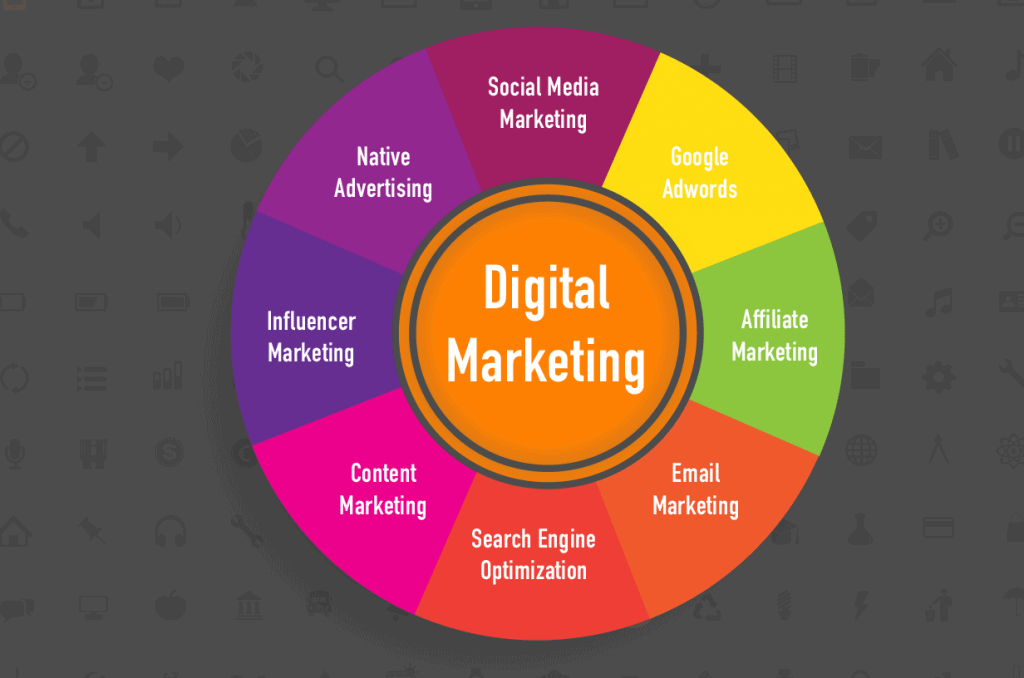Are you struggling to create a marketing campaign that is on budget, can generate a large number of new customers, and delivers the right message? This article shares why multichannel marketing is the best approach for ensuring the success of your business.
In fact, 91% of brands use a multichannel marketing approach, so you must have one of your own to compete. You’ll discover you can start creating a strategy for your business that doesn’t deplete your marketing budget.
What is Multichannel Marketing?
It’s a form of marketing that relies on more than one channel. In fact, most multichannel strategies make use of 4-5+ forms of marketing. There are many options for you to explore, which is great for businesses that do not want to use a specific channel.
Businesses usually start with one or two marketing channels, and then increase the number as the budget grows. Therefore, you don’t need to pressure yourself to launch multiple marketing channels right away. But as your business scales, it’s an important step to stay competitive.
Reduces the Risk
If you rely on a single marketing channel, it’s risky for your business. That’s because one channel might not be viable for various reasons. This could be due to technological changes or the market shifting in a different direction.
However, if you have several marketing channels providing a steady stream of new customers, then losing a few of them would not strongly impact your bottom line. Instead, you can look for more opportunities without feeling like you have to drop everything and scramble.
You can also reduce the risk of your marketing campaign by spreading the budget for each channel equally. This ensures that you can develop every marketing channel equally so that you are not over-reliant on a single one.
Increase Market Share
Adding more marketing channels to your strategy can increase your market share. Some of your customer base can only be found if you look for them on specific parts of the internet. For example, some customers may only interact through your brand on YouTube, Facebook, or by reading blogs. Therefore, you need to be visible on all channels to ensure every customer has a chance of noticing your brand.
Otherwise, you’ll be giving customers to the competition without a fight. Also, by investing in additional marketing channels, you’ll have the edge over competitors that stick to just a few of them.

What Marketing Channels You Should Consider
There are many marketing channels that you can invest in next, but some of them should be toward the top of your list. That’s because they are the most popular, have the best ROI, and are easy to start in.
Here is a summary of possible options for your omnichannel marketing strategy:
Email marketing: this is one of the best marketing strategies because it offers a very high ROI with the right approach. That’s because you can send multiple marketing messages until the lead unsubscribes from the newsletter.
Also, it’s a relatively inexpensive marketing form because the ongoing costs are low once you capture the email. Also, you can place email capture forms on your website, which doesn’t cost anything extra.
Furthermore, you should send a mix of educational content and advertisements to the subscriber inbox. It means you can provide value and increase engagement when you ask users to buy products.
PPC: Pay Per Click marketing involves creating ads that will be published on websites and in the search engines. You’ll be charged for every click that takes the lead to your landing page or website. Therefore, the goal of the strategy is to reduce the cost of each click while getting the maximum return.
It’s a hands-on marketing strategy since you need to constantly optimize keywords. However, it offers immediate results, which can be used to generate a large influx of customers in a short time period.
SEO: search engine optimization involves creating website content that will rank in the search engine results pages (SERPs). The process of SEO involves building content that users find informative and highly-searched keywords are used.
Furthermore, you’ll need to build links, optimize titles, and meta descriptions. It’s a long-term marketing strategy that takes a while to get going, but can result in large amounts of traffic.
Social Media: you can create posts on websites like Facebook, Instagram, Twitter, and YouTube. The posts should be frequent and varied. This includes a mix of funny stories, news, product showcases and much more.
Ideally, your posts should go viral so that other social media users do the marketing for your brand. This is the most cost-effective strategy that can lead to large increases in sales and brand recognition.
Influencer marketing: you can take advantage of the large audiences influencers have built up. This marketing strategy involves offering influencers money or free samples in exchange for plugging your product. This could be in the form of a review or a short advertisement within the video or post.
Some influencers will allow brands they love to market their products for a small fee, or even free of charge if they can get free products. This is ideal when the audience size is large, as the attention generated could be massive.
Affiliate marketing: you can launch an affiliate program for your brand that rewards others for driving traffic to your website and contributing to a sale. For example, you could offer a percentage of the product sale.
Typically, digital sales offer the best affiliate marketing potential since you can provide a bigger share of the sales. Then you can take the buyers list and upsell higher priced products.
Final Thoughts
The several advantages of omnichannel marketing mean that it’s a no-brainer for any business that wants to compete in its marketplace. However, you should not spread yourself too thin by tackling every channel at the same time.
Instead, pick one of the omnichannel marketing strategies mentioned above and don’t stop until it becomes successful. Then you can invest the profits into other marketing channels as your budget grows.






